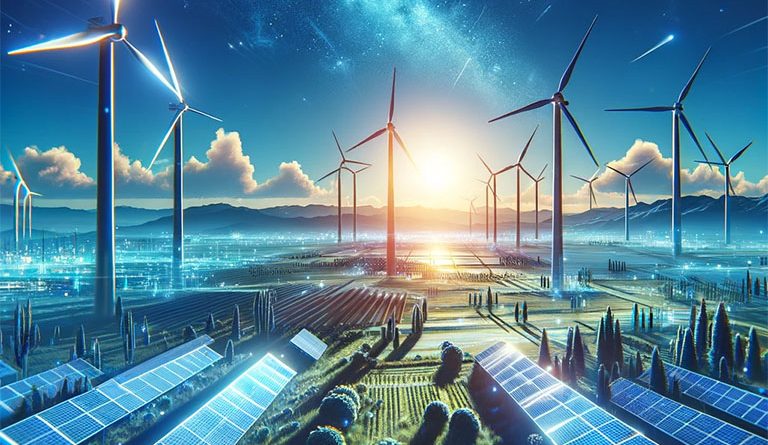- China leads the world in renewable energy development, with a project pipeline nearly twice as large as the rest of the world combined.
- China’s aggressive expansion of renewable energy aims to achieve 1,200 GW of installed wind and solar capacity by the end of the year, exceeding government goals.
- China’s early investment in renewable energy, backed by state support and industrial policies, positions it as a global leader in the sector.
China has long dominated the renewable energy space, as the government has been investing in ramping up the country’s green energy capacity for several decades. It is already the biggest solar and wind producer, as well as the biggest lithium miner, in the world, and its expansion plans show no signs of slowing.
A recent report by Global Energy Monitor (GEM) showed that China’s wind and solar power project pipeline is almost twice as big as the rest of the world combined. China currently has 180 GW of solar energy and 159 GW of wind power under construction. This puts it far ahead of any other country, including the U.S., which has 40 GW under construction. The report focused on major projects of 20 MW or higher, not accounting for the vast array of smaller projects under development. Small-scale solar farms contribute around 40 percent of China’s solar power capacity.
China has been ramping up its renewable energy capacity year on year, installing more solar power between 2023 and 2024 than the previous three years combined, and more than the total global capacity installed in 2023. This has put the Asian giant on track to achieve an installed wind and solar capacity of 1,200 GW by the end of the year, putting it six years ahead of the government goal. Despite this huge expansion, analysts suggest that China will need to continue adding more renewable energy capacity to meet its ambitious climate pledges. It will have to add 1,600 GW to 1,800 GW of solar and wind power by 2030 to meet its aim of an energy mix consisting of 25 percent renewable sources. China’s energy demand is continuing to grow rapidly due to the expansion of several industries, and between 2020 and 2023, just 30 percent of the energy consumption growth was met with renewable resources, compared to a target of 50 percent
As energy consumption in China rises rapidly, the government is putting a huge effort into quickly expanding the country’s renewable energy capacity, while also continuing to rely on coal to meet this demand. This means that China continues to emit huge quantities of carbon emissions every year. Nevertheless, government efforts to expand the renewable energy sector demonstrate what can be achieved with state support and funding, revealing just how slowly many other countries are expanding their renewable energy capacity. The GEM report stated, “The unabated wave of construction guarantees that China will continue leading in wind and solar installation in the near future, far ahead of the rest of the world.”
China has been successful in expanding its renewable energy by investing state funds, heavily and early, into solar and wind power, having steadily grown the sector from the early 2000s and accelerated expansion in recent years. This is supported by industrial policies that encourage investment in the sector. Compared to most other countries, China’s heavy state involvement and support for the renewable energy industry means that it is easy to approve and build transmission grids and renewable energy projects more quickly and efficiently, providing access to finance and avoiding the long licensing processes that often slow down developments in other countries.
Policy efforts by the Chinese government have been echoed in policies introduced in other parts of the world, such as the U.S. Inflation Reduction Act (IRA) and the EU’s REPowerEU. However, China was far ahead of the competition, and the IRA and REPowerEU are only just now starting to encourage greater investment in renewable energy and clean tech. This comes at a time when the U.S. is becoming increasingly concerned about Chinese dominance in green energy. China is not only on top when it comes to wind and solar energy production but also in critical minerals mining, producing around two-thirds of the world’s lithium, 73 percent of cobalt, 70 percent of graphite and 95 percent of manganese. It also dominates microchip production, allowing it to rule many of the global supply chains associated with green energy and clean tech.
China’s renewable energy exports increased by 35 percent between 2019 and 2023, as it offered very competitive prices thanks to the high level of state financial support in the sector. The country’s biggest exports included batteries and solar modules. Cohesive supply chains, low prices, and a high standard of performance have helped China’s renewable manufacturers supply over 65 percent of the total global demand. Xiaoyang Li, the Director of APAC Power and Renewables Research at Wood Mackenzie, suggests that the investment sentiment for green energy in China is strong. Li explained, “Renewable energy is favoured by Chinese developers in near-term overseas investment compared to other conventional power generating technologies. More than a hundred wind and solar projects have been developed in the Belt and Road market in the past decade.”

